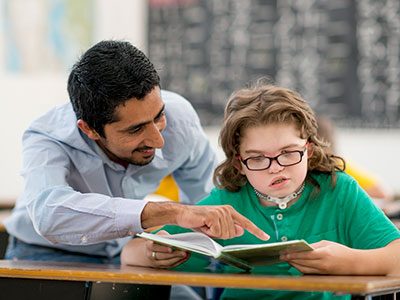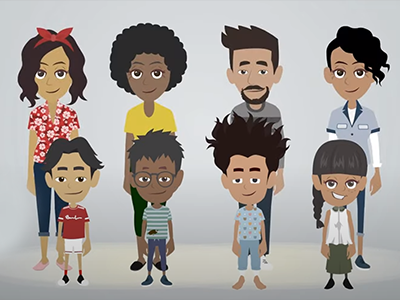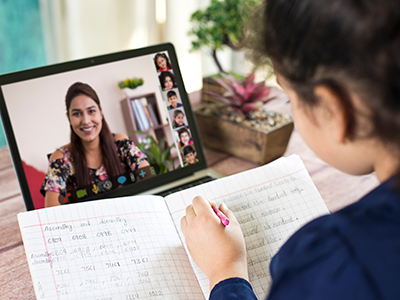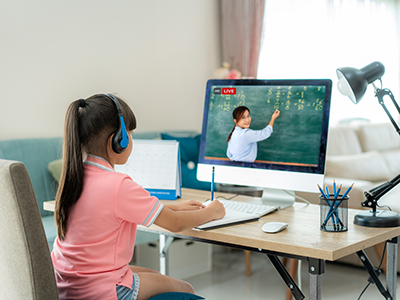“Special education” holds a standard spot in our vocabulary around school and in-school supports for children, but what exactly is it and is it right for your child? Simply put, special education is instruction that is specially designed, at no cost to the parents, to meet the unique needs of a child with a disability. That may sound broad, but that’s because it can look different depending on the child’s needs and if they require an individualized curriculum, adaptation or modification to the general curriculum or a combination of those.
Clarity comes with the student’s Individualized Education Program (IEP) which outlines their special education needs, the related services and supplementary aids provided to or on behalf of them, and therefore guides the special education they receive. Infants and toddlers who need early intervention services may be eligible for an Individualized Family Service Plan (IFSP). Private and religious school are not required to offer special education but may offer an Individual Service Plan or Instructional Services Plan (ISP). This instruction can be provided in the classroom, in hospitals and institutions and in physical education.
Does your child need special education?
Some children have a clear medical, developmental or psychological disability or diagnosis that requires special education. However, there are many cases where a disability has not yet been detected but the child is showing signs that they are struggling in school. Understanding how to help a child who is struggling in school can be challenging. To help determine what resources and supports can help your child, consider talking with your child’s teacher or another professional at the school (such as the assistant principal) about available supports and an evaluation for an educational disability. You can also talk with your child’s pediatrician to get more information about resource options. Knowing common types of special education and learning about resources can help determine the best way to get your child the appropriate support.
Examples of special education
- A child requires modifications (changes to what is being taught or expected) to access school curriculum.
- A child needs accommodations (changes to how the student completes work or expectations) including the educational setting, materials, instruction, schedule and student response.
- A child needs help with physical, developmental and academic needs. This can include speech-language pathology services, physical therapy for physical fitness and motor skills, travel training (providing instruction to children with significant cognitive disabilities) and vocational education (programs that help prepare students for employment that do not require a baccalaureate or advanced degree).
The Washington, D.C., special education eligibility process
In Washington, D.C., the special education eligibility process can take up to 90 days. It begins when a child is referred for special education services by parents, teachers, daycare staff, health care providers or psychologists, either verbally or in writing.
Within 30 days of when a referral is received, the child’s data is reviewed by a multidisciplinary team (MDT) comprising of the parent/guardian(s), special education teachers, general education teachers and a representative from the school/Local Education Authority (LEA). The MDT will host an AED or Analysis of Existing Data meeting to decide whether to continue with a child’s evaluation. If an evaluation is determined necessary, written consent will be obtained from the parent/guardian before proceeding. It is important for parents to ensure that data was collected in all their areas of concern and the IEP team decisions are backed by sufficient data.
Once a consent for evaluation is signed, evaluations and review of those results in an eligibility hearing will take place within 60 days. Types of evaluations include psychological, educational, behavioral and others as deemed appropriate.
Once evaluations are completed, the IEP team will then determine if the child meets the special education criteria and is eligible for services. If a child is eligible, they will then develop and implement an IEP for the child. If a child is ineligible, the team will discuss other ways and programs to support the student’s needs outside of special education, such as tutoring, counseling, academic intervention, a Behavior Intervention Plan or a 504 plan. Eligibility is re-evaluated every three years to determine if any services should be added or changed, and to ensure the child still qualifies for services.
If a child were to switch schools within D.C., both IEPs and 504 plans can be transferred between schools. The child would be assigned an IEP team with the new school to ensure their IEP or 504 plan is able to be successfully transferred. If a child were to transfer to a DC school from Virginia or Maryland, both IEPs and 504 plans may also be transferred, once the new school has been notified of the child’s special education needs. Virginia and Maryland’s special education programs have different templates and systems, requiring a newly adapted DC plan once the child has transferred.
Where to locate additional resources
District of Columbia
- DC Special Education Eligibility and Implementation
- DC Special Education Hub connects DC families with tools, information and one-to-one support to empower them to make informed decisions about their child’s learning. For more information on where to submit referrals, the difference between IEPs vs. 504 plans, and the types of services offered, visit the DC Special Education Hub webpage.
- To find out how to access your state’s special education resources, contact your school district of state department of special education, or visit your state’s Parent Training Information Center.
Maryland
Virginia
 https://riseandshine.childrensnational.org/wp-content/uploads/2025/04/Provider-and-patient-interaction-featured.png
300
400
Danielle Robbins
https://riseandshine.childrensnational.org/wp-content/uploads/2017/11/childrens_riseandshine_logo.jpg
Danielle Robbins2025-04-11 12:25:512025-04-11 12:25:51Understanding options for medical and educational evaluations
https://riseandshine.childrensnational.org/wp-content/uploads/2025/04/Provider-and-patient-interaction-featured.png
300
400
Danielle Robbins
https://riseandshine.childrensnational.org/wp-content/uploads/2017/11/childrens_riseandshine_logo.jpg
Danielle Robbins2025-04-11 12:25:512025-04-11 12:25:51Understanding options for medical and educational evaluations


 Julia DeAngelo, MPH, was a program manager of school strategies and co-leads the Early Childhood Education workgroup at Children’s National.
Julia DeAngelo, MPH, was a program manager of school strategies and co-leads the Early Childhood Education workgroup at Children’s National.














Leave a Comment
Want to join the discussion?Feel free to contribute!